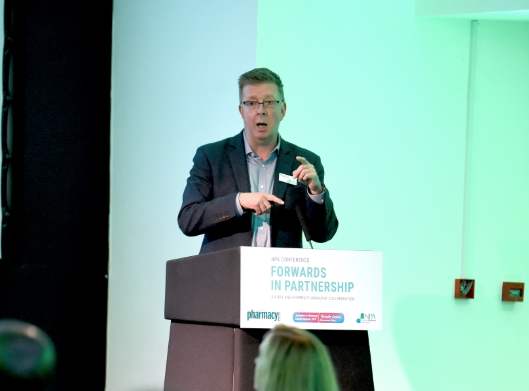New tool 'will help pharmacies identify their PCN'
In Health & NHS
Follow this topic
Bookmark
Record learning outcomes

By Neil Trainis
Michael Lennox, the chief officer of Community Pharmacy Somerset and local integration lead for community pharmacies, has revealed that a mapping tool to help pharmacies identify which primary care network (PCN) they should work with is in development and will be available in the next few weeks.
The tool is being created following reports that some contractors have experienced difficulties engaging with a PCN containing GP practices that are owned by a particular group and spread across different parts of a city.
There have also been concerns that some PCNs cross clinical commissioning group boundaries, with practices belonging to more than one PCN.
In an interview with Independent Community Pharmacist, Lennox (pictured), who has been appointed on a part-time basis by the National Pharmacy Association and PSNC as local integration lead for community pharmacies, said a pilot of the tool, known as geographic information mapping services (GIMS), will be evaluated on Thursday and, depending on that assessment, will be made available to all LPCs to clarify PCN engagement across England.
“What do you do when something is messy? You try and tidy it up first of all. NHS England have backed into one of the commissioning support units something called GIMS, geographic information mapping services, and GIMS has mapped all the PCNs,” Lennox said.
“Once you look at the PCN map, it’s only messy at the edges. The majority of PCNs make pretty damn decent sense. The second thing is if you can map the PCN boundaries using GIMS, why can’t you map where pharmacy fits into that using GIMS?
“Well guess what? I, at the minute on behalf of the PSNC, am supporting a project really rapidly to get the mapping done of community pharmacies within the appropriate PCN.
“So using script data from (NHS Business Services Authority), we’ll be able to say ‘these pharmacies in terms of scripts have an association with this PCN. So Michael’s pharmacy in X does 75 per cent of its scripts from this PCN. Which PCN is Michael in? Well, that one times 75 per cent. But I’ve got 25 per cent of other patient footfall that comes from other PCNs. Do I need to do anything about it?’
“Well, GIMS can actually map it to six levels by percentage connection on scripts what your PCN map is, so each pharmacy, on principle, will be able to map out which PCN it’s in.”
England-wide rollout
When asked when the technology will be available, Lennox said he would be hearing feedback from an initial trial on Thursday September 12 and explained: “ I want to see how the map turns out and if the map turns out well and the process and algorithm they’ve created runs it beautifully, then they’ll be able to press the button and do the whole of England.
“And that will demystify what PCN you should be in. Most LPCs, with a map and a bit of gumption, can pretty much work out the likely outcome to 95 per cent accuracy but my brothers and sisters running LPCs up in hyper-urban areas, the challenge is way bigger. I get that.
“And where you’ve got straddling and patches of PCNs across a conurbation, that is messy. But this GIMS process, at least we’ll know the truth of it.
“If that process looks valid and useful, then the button will be pressed so the entire country will be mapped. And that will have to be within weeks rather than months, before October because this is a precursor to doing your PQS (pharmacy quality scheme).
“If you want to map your pharmacies and know which primary care network you’re in, wouldn’t it be great if you had a little bit of factual science behind that to back up your local on-the-ground intelligence.
“And it also legitimises it, so you can say ‘legitimately, I’m in this PCN because that’s what GIMS told me.’”
Lennox said it was likely that LPCs would have to use the tool to “disseminate the information locally” for their contractors but suggested the form it will eventually take is yet to be decided.
“I wouldn’t necessarily say it shouldn’t be an open book. There could be a ‘find your PCN’ (option),” he said.
“So what you get on the map is a little pie chart and it says ‘you’re in this PCN, 60 per cent. You’ve also got 40 per cent in that PCN.’”
